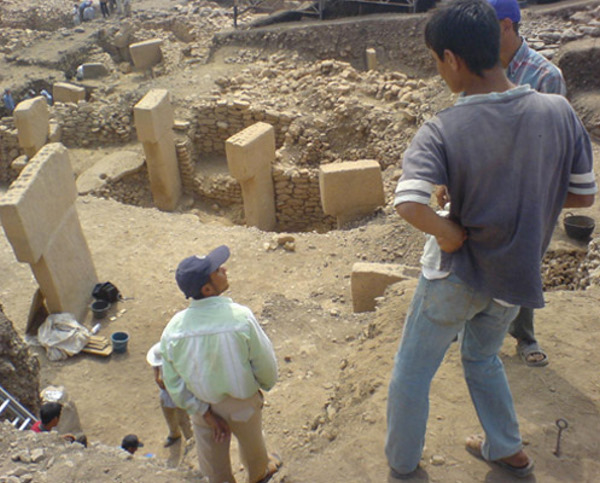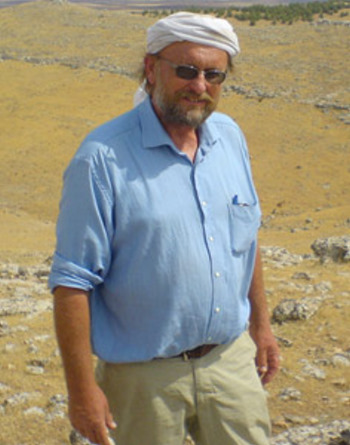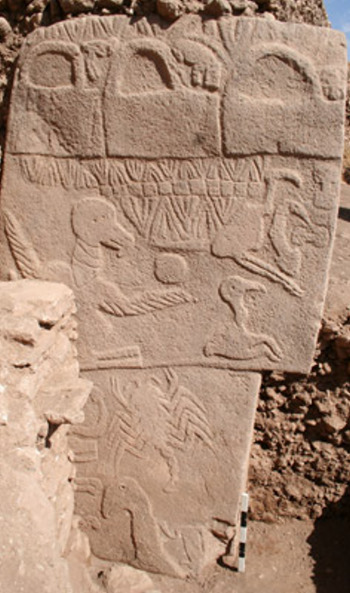 |
Is this the world’s oldest
statue?
SOURCE: http://www.thefirstpost.co.uk/2435,features,is-this-the-oldest-statue-in-the-world
FIRST POSTED NOVEMBER 24, 2006
It should be famous but it stands alone and unloved, says Sean Thomas
I can't quite work out what I'm seeing. It looks like a fossilised snowman. Or maybe a mock-up of a Doctor Who monster. Yet, if scholars are right, this is the oldest statue in the world. The cream-coloured effigy was found in the ancient Kurdish city of Sanliurfa, in the hot plains of central southern Turkey, not far from the extraordinary archaeological dig of Gobekli Tepe.
The statue was discovered a few years ago when foundations were being laid for a new bank. The excavations took place right next to an historic city attraction - the Balikli Gol, a beautiful fishpond surrounded by mosques and gardens.
As the workmen dug away in the Turkish sunshine, odd chunks of limestone began emerging from the earth. Archaeologists were summoned and, pieced together, the chunks turned out to form a peculiar and hefty sculpture of a man, or a man-like god. The head of the statue had piercing coal-black eyes. The hands were placed in front of the genitals, like a soccer player protecting himself.
The statue turned out to be part of a larger discovery: of a Neolithic temple. This and the statue have now been dated to 10,000BC, making the 'Snowman' possibly the oldest statue in the world.
The veracity of this claim depends on semantics. What is a 'statue'? The Venus of Willendorf dates back to 20,000BC. But the Venus is just 11cm long: surely not a statue.
So the Balikli Gol Snowman is the first sizeable sculpture of a man. Arguably, it is the oldest sculptural representation of humanity, the oldest self-portrait in stone. In the accepted sense of the word, that makes him the oldest known statue.
You'd think the Balikli Gol statue would be famous. Yet it is scarcely known. It stands in the tiny local museum, next to the fire extinguisher. Why?
One reason is the venom of local politics: the ongoing tussle between the Turks and Kurds prevents good publicity for archaeological treasures, in which the area of Sanliurfa abounds.
But maybe the Snowman lacks friends for another reason: because he is such an unsettling presence. His lonely, obsidian eyes dominate the gallery where he stands; his wistful gaze speaks of a weird and agonising regret. After a few minutes with him, I make quickly for the exit; and when I reach the sunny street, I find I am sighing with relief.





